Day 1 Arrive Chennai
Arrive Chennai. You will be met by our representative at the airport escorted till your check in at Hotel. (Check in time at hotel is 2pm, early check in will be subject to availability at time of arrival)
Chennai is the cultural heartland & gateway to the South India. Here on the east coast , ancient traditions of classical dance, music arts, handicrafts, literature, philosophy and religion have taken root and spread over India and to many parts of the world. In exchange , global influences flowed and were integrated.
Afternoon city tour of Chennai.
Visit Fort St. George, completed in 1653 and today filled with reminders of the past, including St. Mary’s, the first church consecrated on Indian soil. The National Art Gallery has many excellent bronzes including the famous Chola period bronze Nataraja, the God Shiva, in the cosmic dance pose. The Government Museum (closed on Fridays), which contains sculpture and architecture produced by the Dravidian dynasties. Drive along the Marina, an elegant promenade and proceed to the old Indian section of Mylapore. Visit San Thome Basilica – St Thomas, the Apostle, is said to be buried h6re. He came here to spread the gospel, legend holds,
Overnight at Hotel.
Day 2 Chennai – Mahabalipuram
Morning drive to Mahabalipuram enroute visit Kanchipuram.
The Golden City of Kanchipuram has about 125 shrines, all of them centuries old, dating back to the early Cholas of 200 B.C. It was successively capital of the Cholas, the Pallavas and the Rayas of Vijayanagara. The height of Kanchi’s glory was when it was capital of the far-flung empire of the Pallavas from the 6th to the 8th centuries when Mahabalipuram and Mylapore were its great ports. All that is left are its magnificent temples. Kanchipuram‘s other claim to fame is its silk, renowned for more than four centuries. A unique system of weavers makes and sells Kanchi saris which are the richest saris in India and certainly the most sought after.
Continue to Mahabalipuram.
Mahabalipuram is a beautiful beach resort which consists of a the tiny village by the sea in which all else is dwarfed by a dream world of awesome Tamil art, an open air museum of sculpture in living rock.
On arrival check in at Hotel.
Overnight at the Hotel.
Day 3 In Mahabalipuram
Morning sightseeing of Mahabalipuram
The piece de resistance is Arjuna’s Penance or the Descent of the Ganga, the world’s largest bas-relief, 764 ft. by 288 ft. (27m by 9m). It is a beautiful composition of hundreds of celestial beings, human and animals all hurrying to a natural rock cleft that divides the giant stone. The best known landmark of Mahabalipuram, is the Shore Temple, which has stood by the sea for 12 centuries. Its twin spires are pure poetry in granite.
The other wonders of Mahablipuram are the mandapams, each a cave scooped from a hillside of solid rock and ornamented with pillars, sculptured with panels and with rathams (monolithic rock-cut shrines) that have inspired generations of South Indian temple-builders. The five rathas, named after the Pandava brothers, the heroes of the Mahabharata, and their wife Draupadi, are part of an amphitheatre of art. Each temple though incomplete, remains a gem. Also in this area are a magnificent elephant and an exquisite Nandi, the sacred bull.
Afternoon free.
Overnight at Hotel.
Day 4 Mahabalipuram – Pondicherry
Morning drive to Pondicherry enroute visiting Auroville.
Pondicherry was the former capital of the French territories in India. Landmarks include the Raj Nivas, the Pondicherry Museum Aurobindo Ashram, the best known landmark of Pondicherry
Afternoon city tour of Pondicherry.
Sri Aurobindo Ashram: This place was founded by Sri Aurobindo, who in the early ages was a revolutionist and then turned poet. He was jointly helped by The Mother, who was a Paris born painter. The Ashram is a center for the practice of integral yoga, meditation, and inner development.
Auroville: Auroville was inaugurated on 28th Feb. 1968 with representation from 124 countries. Auroville was envisioned as a Universal Town, where people from different nationalities, faiths and beliefs, can live in peace and harmony. It is an attempt to realize a new society as envisioned by Sri Aurobindo and the Mother. Nearly people from 35 countries are living here to realize on human unity and transformation of consciousness. Auroville welcomes people from all parts of the world to live together and explore cultural, educational, scientific, spiritual, and other pursuits in accordance with the Auroville Charter. Auroville information center and Marti Mandir [Meditation hall with world’s biggest man- made crystal ball is the places open to most of the visitors. It offers less to see and lots to experience.
Overnight at Hotel.
Day 5 Pondicherry – Tanjore
Morning drive to Tanjore enroute visit Chidambaram & Darasuram.
Chidambaram is a sprawling ancient temple renowned for its architecture encompassing the complete pose sequences of the classical South Indian, Bharat Natyam dance; from which originated the revived dance in its present popular form.
The temple at Darasuram, 4 km west of Kumbakonam is Airvatesvara (Airavat is the holy white elephant) Temple, constructed by Rajaraja Chola II (1146-63), is a superb example of 12 Century Chola architecture. Many statues were removed to the art gallery in the Thanjavur Palace, but have since been returned. The remarkable structures depict, among other things, Shiva as Kankala-murti – the mendicant. Stories from epics and Hindu mythology are depicted. Adjoining the Airavatesvara temple is the Deiva Nayaki Ambal temple.
After visit continue drive to Tanjore.
Tanjore is famous for the Brihadeeswara Temple has gopurams over 90 ft. (27 m) high and are exquisitely sculpted. They lead to a vast courtyard in which the main temple stands guarded by two sentries carved out of single stones. Facing the sanctum is a Nandi (bull) Shiva’s favorite vehicle. The corridors around the sanctum have many sculptures as well as Chola frescoes which were recently discovered. The Palace and the remains of the fort that surround it can still be seen. Members of the former royal family of Thanjavur still occupy some apartments in the inner recesses, but the Palace is now mainly used as an art gallery.
On arrival Check in to hotel.
Overnight at Hotel.
Day 6 In Tanjore
Morning city tour.
Visit the famous Brihadeeswara Temple which has gopurams over 90 ft. (27 m) high and are exquisitely sculpted & the Saraswati library.
Balance day free at leisure.
Overnight at hotel.
Day 7 Tanjor – Trichy – Madurai
Morning drive to Madurai enroute visiting Trichy.
Trichy is a historical town and was for a period the capital of the Chola rulers. Visit the Rock Fort, 300 ft. (90 m) high, which dominates the landscape. A fine view of the city can be had from the fort. Visit the island of Srirangam across the River Kaveri – 3 miles (5 km. ) away. The temple here is practically a town in itself with several residential streets within its 1 sq. mile together with a number of shopping streets.
Continue to Madurai.
Madurai known as the City of Festivals, Madurai is the most ancient home of culture and the first Tamil Academy was founded here by scholars and pious kings. The town has developed encircling the famous Meenakshi Temple built in the Dravidian style – one for Shiva and the other for his spouse Meenakshi. It is believed that if you place a literary work in the tank of this temple, it will sink if it is worthless and float, if worthy. The temple has beautiful sculptures of Shiva. The court of a thousand pillars built in 1560 AD also has lovely sculptures. From any side inside the hall, the visitor can get a kaleidoscopic view. Outside the temple, are the Musical Pillars, which produce different swaras or notes when tapped. To the east, is the Vasanth Mandapam with life-size statues of nayakas of Madurai.
Overnight at Hotel.
Day 8 In Madurai
Full day tour of Madurai visiting Meenakshi temple, Thiirmalai Nayak Palace & Alagar.
The `Temple City’ was the capital of the Pandya kingdom but it was during the reign of the Nayaks (10th to the 18th century) that the magnificent Meenakshi Temple Visit the Palace of Thirumalai Nayak, the most famous king of the Nayak dynasty. It has a great audience hall, a three-sided pavilion and a courtyard.
Evening witness the “Aarti” a must see for all visitors. The Consort of Goddess Durga – Shiva, is brought to her chamber in procession. This procession goes around the temple, and has various short ceremonies at different shrines, before the final prayer at the entrance of her chamber. The entire procession takes 45 mins.
Overnight at Hotel.
Day 9 Madurai – Bangalore – Hassan
Morning transfer to airport to connect flight to Bangalore. Meet and assist on arrival & drive to Hassan.
Enroute to Hassan visit Shravanabelagola.
One of the most-visited Jain pilgrimage spots in South India, Shravanabelagola is a popular weekend getaway from Bengaluru. It is famous for a massive 57-ft high statue of Bahubali, which is the world’s tallest monolithic stone statue carved out of a single granite block.
After visit continue drive to Hassan.
Check in at Hotel.
Overnight at Hotel.
Day 10 Hassan – Mysore
Morning drive to Mysore enroute visiting Belur & Halebid
Belur is 39 km from Hassan, Belur was a flourishing city some 800 years ago under the Hoysala kings. The Belur Temple, also called the Chennakeswara Temple, has typical Hoysala architectural features. Its stone walls are covered with a profusion of intricate carvings, enough to take one’s breath away.
Helebid 16 km from Belur, it is a double-shrine, more impressive than the temple at Belur constructed a decade after it. The temple here gives one the impression that it was created out of lace rather than of sandstone.
Continue to Mysore.
This ‘Garden City’ stands by a rocky hill named after the goddess Chamundi. It is a city of palaces and museums. The palace of the Maharaja within the Old Fort is admittedly one of the most beautiful buildings in India. The best time to visit Mysore is during the Dussehra festival, which is observed with pomp and pageantry for ten days in the month of September/October. Sightseeing of Mysore City includes a visit to the Zoological Gardens, Mysore Arts and Crafts Centre, the beautiful Brindavan Gardens illuminated during the weekends, and the Chamundi Temple overlooking the city.
Overnight at Hotel.
Day 11 In Mysore
Full day tour of Mysore.
Visit the Maharajas’s Palace – a synthesis of Hindu and Muslim architectural styles. Gateways, domes, arches, turrets, colonnades, sculpture – all are here in great profusion. Visit Chamundi Hill named after the Royal Family’s patron goddess and the site of summer palaces, an ancient temple and the 16-foot Nandi (Siva’s bull) carved out of a single huge boulder. The view from the hill offers a beautiful panorama of not only all Mysore, but also ranges of hills, lakes and the turrets of temples and churches.
Overnight at Hotel.
Day 12 Mysore – Bangalore & fly out
Morning drive to Bangalore.
Bangalore is the capital of Karnataka. A city of gardens founded in 1537 by Kempe Gowda, a chieftain who constructed a mud fort at this site, later rebuilt in stone in the 18th century by Hyder Ali, it is in ruins today and is situated at an altitude of 1914 m, it has a salubrious clime throughout the year. It is one of India’s main commercial and industrial centres.
On arrival proceed for Half day tour of Bangalore.
Visit the Bull Temple, the monolithic deity being the Nandi or celestial bull, a marvellous work on granite. The Mysore Arts & Crafts Centre, and drive through Commercial Street past the magnificent Neo-Dravidian structure, Vidhana Soudha, the government secretariat. Time & interest permitting, visit the Lal Bagh gardens
Later in evening transfer to international airport to connect flight to onward destination.

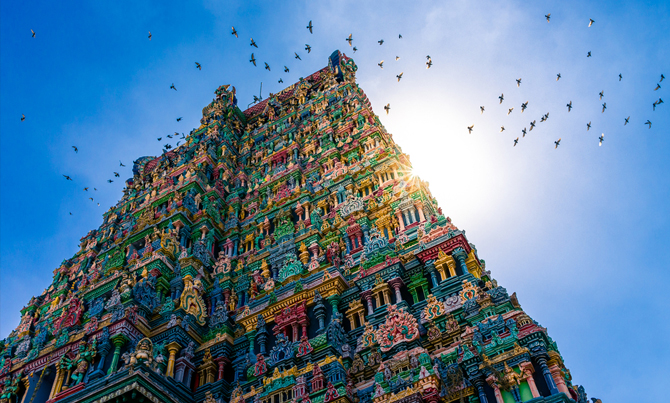
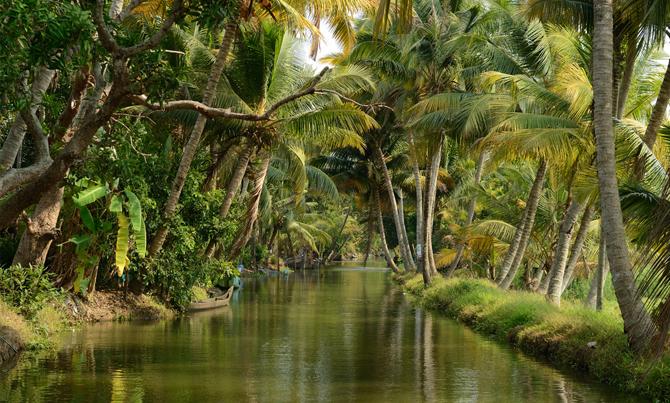

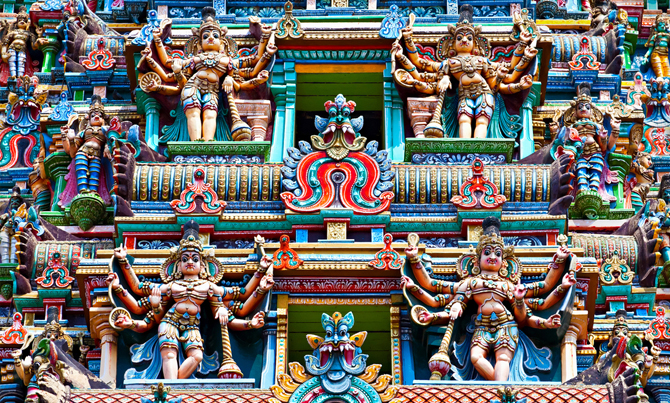
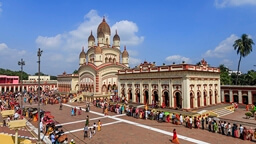


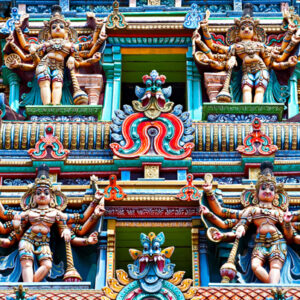

Reviews
There are no reviews yet.